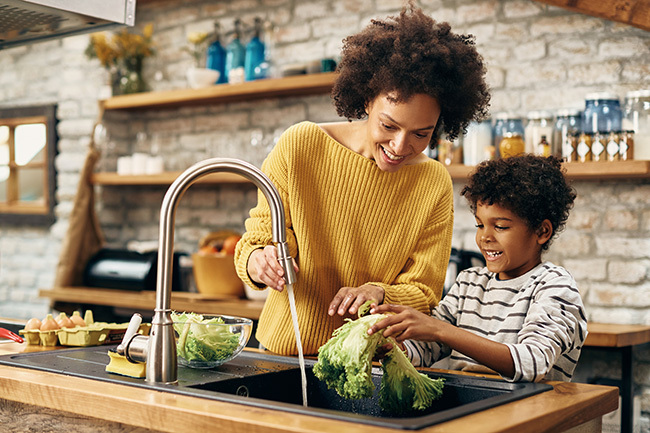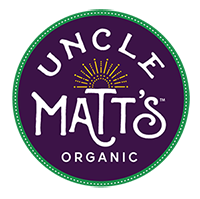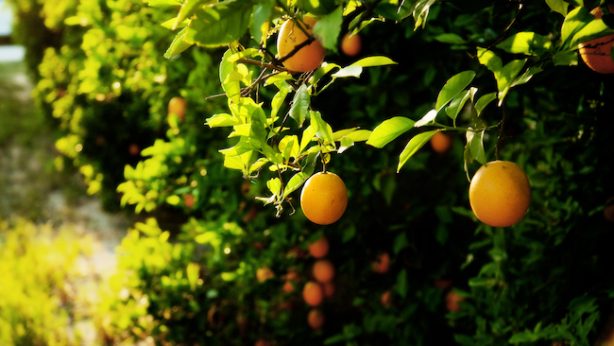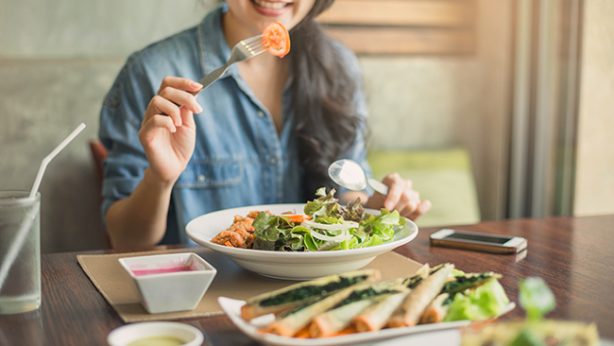Healthy Habits: Organic Education for Kids

A big part of parenting is looking for “teachable moments” for our kids. It’s exploring ways to make life’s important lessons fun without lecturing your little ones. We’ve put together a list of ideas and opportunities to teach your kids about making healthy, organic and safe food choices for themselves and the planet by taking advantage of activities you do regularly in the yard, in the kitchen and in the grocery store.
Let it Grow!
Choose between a backyard vegetable garden, indoor herb garden, or both! Whichever you choose, this is a great opportunity to show your children how food is grown. How many kids believe all food comes from the grocery store? By planting your own garden, you can show your kids where food really comes from before it hits their plate at dinner time.
When planting your garden, be sure to emphasize to your kids the time it takes for a plant to grow from a seed. Help them see this process over time by taking daily pictures of a plant’s growth to look back on later. Let your kids be a part of the garden fun by allowing them to inspect the garden, water the plants and be the ‘garden CEO’ for when it’s time to pick a ripe vegetable or fruit.
Organic Tip: Planting a backyard garden is a great time to share with your kids the importance of organic farming. You can tell your kids that sometimes harmful chemicals can be used on plants to kill weeds or keep away bugs. Show your kids the organic way by demonstrating how to pull weeds instead of using a toxic spray. You can also plant marigolds in your garden to help with insect control.
Scrubba-dub-dub:
Let your kids be part of the meal prep process by letting them help with washing fruits and vegetables. Use the analogy of washing hands before eating to explain why cleaning off your garden delights is important. If you’re picking produce from your backyard garden, you can show them how to make sure any dirt and soil is washed off. Washing produce you picked up at your local market? Tell your littles that washing these foods is a must since many hands might have touched what they’re about to eat.
Organic Tip: Wash your fruits and veggies with just water to avoid using any potential toxins on your food.
Looking at Labels:
Trying to explain to your kids what it means to be organic can be difficult when you can’t show them pesticides on their food or take them on a field trip to a big conventional farm. Take a different approach by teaching them the importance of knowing what they eat impacts their health.
How to start? Take a tour of food labels. Choose something with an organic label and something that’s not so healthy (it’s okay, we’re all guilty). Read aloud the ingredients list from the organic package first. You’ll likely be able to pronounce everything or be able to quickly explain what it is. Then read aloud the label on the not-so-healthy item. Make sure to emphasize some of the words or chemicals that are hard to pronounce and point out things like artificial colors and flavorings. Then ask your kids which one they would rather eat based on what they heard.
Once you do this, show them the USDA organic seal on the packaging of the organic item. Then show them how the other item doesn’t have this label. You can tell them that this special seal means that their food was made without harsh chemicals and pesticides that could be bad for the earth, and their bodies. How to tell on produce with no sticker? Look at the first number on the barcode. It should be a “9.”
Organic Tip: Take a field trip to the grocery store. As you’re shopping, ask your kids to find the organic version of a particular food item on your list. Watch and see if they can spot the organic certification.
Accidents Happen:
Cooking at home can also be a great time to teach your children kitchen basics whenever you make a mistake. We’ve all let some of our non-refrigerated fruits and vegetables go bad sitting on the counter. We’ve also let meat sit in the fridge too long before we’ve had a chance to put it in the freezer. Show your kids what food looks and smells like when it goes bad. Let them know their noses are so important when it comes to cooking. If something doesn’t smell the way it should, don’t eat it!
Organic Tip: When produce goes bad, ask your kids to add it to your at-home compost pile, so you’re showing them the food isn’t wasted just because you didn’t eat it.
Safety for your Sous Chefs:
Here are some other quick ideas for incorporating best safety practices and building confidence in the kitchen –
- Put a temperature “cheat sheet” on the fridge so kids know when their chicken and fish are safe to eat. You can even let them use the meat thermometer to see for themselves!
- Show your kids where the oven mitts are so they always know how to safely remove things from the oven (under supervision, of course!).
- Let your kids put leftovers away when they’re finished eating. Explain the “temperature danger zone” for things that need to go in the fridge.
- Make a game out of quickly turning the oven off when finished cooking, switching the faucet off after doing the dishes and quickly closing the refrigerator and freezer doors. This saves energy and water and ensures food and home safety.
Kitchen and food education can take a lot of different forms, but as long as we make it fun, we can make a lasting impression on our kids. Check out some of our recipe ideas for you and your family to create together!


